Outforia Quicktake: Key Takeaways
- Lemon sharks can grow up to 12.1 ft (3.7 meters) and 404.6 lbs (183.7 kg), and have yellowish skin that helps them blend into the sandy seafloor.
- They are docile, posing little threat to humans, and are known to be found around coral reefs and docks where there is food.
- Inhabiting the Pacific and Atlantic Oceans, they adapt well to different salinity levels, but are currently listed as “vulnerable” with decreasing population trends.
- Lemon sharks have a low reproductive rate, taking years to reach sexual maturity, and their habitats are constantly threatened by overfishing and habitat degradation.
Lemon sharks get their name from the yellow hue of their skin. The yellowish tinge helps them to blend in with the sandy substrate that makes up the seafloor.
They are large animals, but lemon sharks are rather docile and pose little threat to humans. People often see them in coral reefs and near docks where they know there is food.
Lemon sharks are fascinating animals with complex life histories and keen senses. Keep reading to find out more.
What Is A Shark?

Sharks are vertebrates, and they are part of the fish family. There are about 500 types of sharks around the world.
Some species are as small as 7 in (17.8 cm) long and weigh less than an ounce. Others can grow up to 32.8 ft (10 m) and weigh as much as 20.6 tons.
Sharks are “elasmobranchii,” a type of fish that has a skeleton of cartilage rather than bone.
Each shark has five to seven gill slits on each side of their body. Most fish only have one gill slit on each side of their body. The extra gill slits allow sharks to more effectively pull oxygen from the water.
Researchers have examined the fossil records of sharks. They believe that sharks are over 400 million years old. Sharks have been around far longer than dinosaurs.
The reason people are so fearful of sharks is that they are formidable predators. They have many rows of sharp teeth that they use for shredding. Some species have sharp, triangular teeth, while others have serrated teeth.
What Is A Lemon Shark?
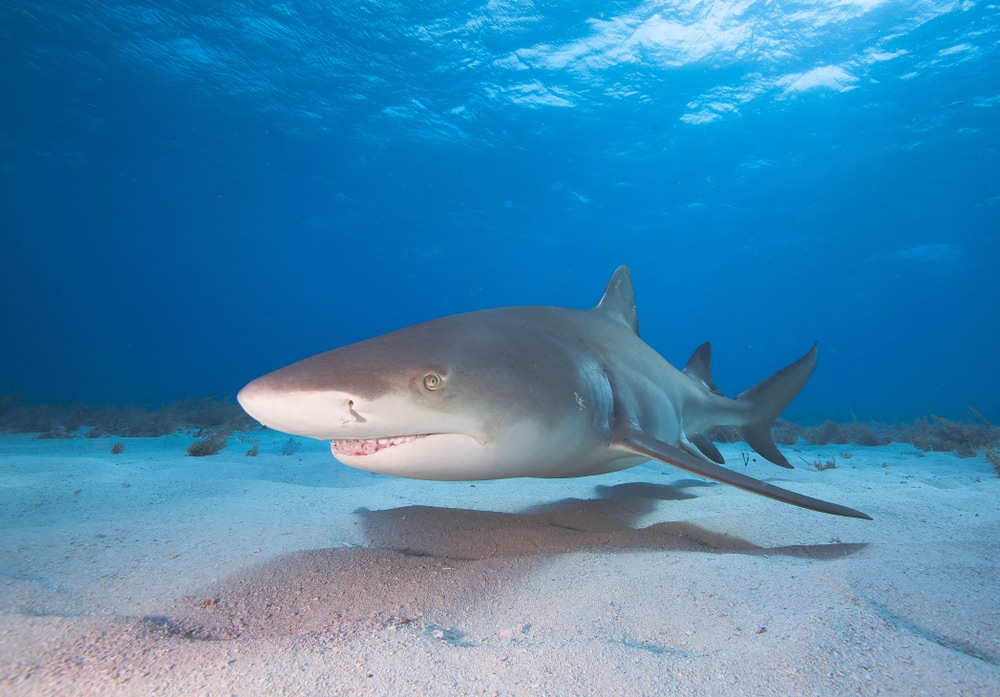
Lemon sharks are part of the class “Chondrichthyes.” This group includes sharks, rays, and their close relatives.
They are part of the family “Carcharhinidae,” the requiem sharks. Requiem sharks make up one of the largest families of sharks. They are also the most well-known.
Requiem sharks have torpedo-shaped, streamlined bodies and round snouts. Their upper bodies are gray to brown with a light-colored underside.
Requiem sharks have electro-conductivity and vibration senses to help them hunt. They are fierce predators that travel alone or in small groups. About half of all shark attacks occur by requiem sharks.
Physical Characteristics
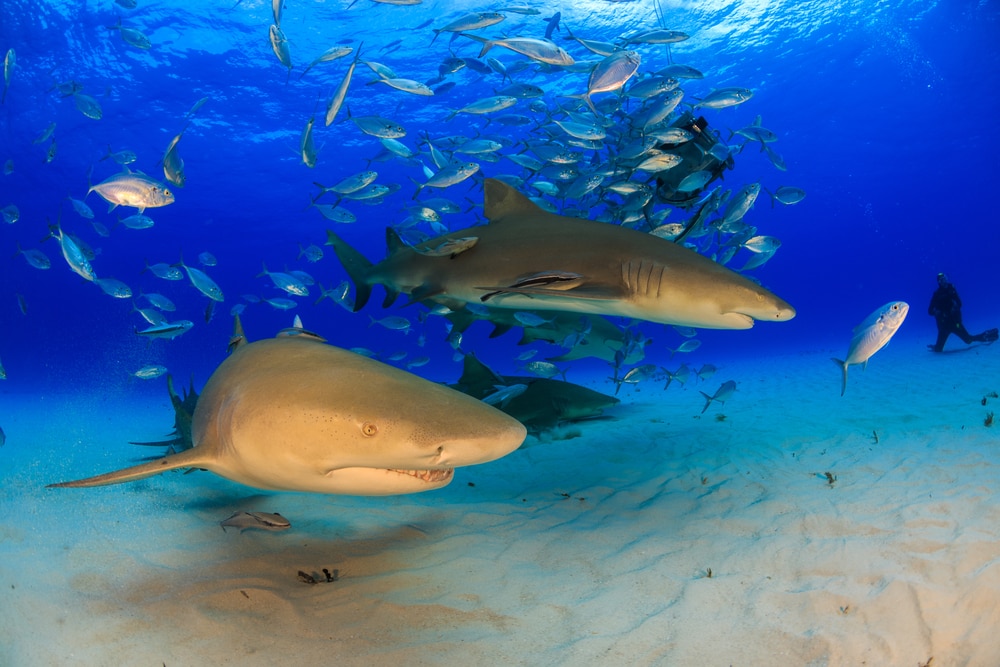
Lemon sharks (Negaprion brevirostris) get their names because of their yellowish bodies. Their skin ranges from a yellowish brown to olive on the top side of their body. The underside of their body is light yellow without any markings.
These sharks have large bodies with snouts that end in blunt tips. The length of their snouts are shorter than the entire width of their mouths. Their bodies are typically 7.9-12.1 ft (2.4-3.7 m) long and weigh as much as 404.6 lbs (183.7 kg).
Lemon sharks have two dorsal fins on their backs. The dorsal fin nearest the tail is shorter than the one further up the back. They also have a pair of pelvic and pectoral fins.
Their upper teeth are formidable for shredding prey and are serrated at their base. They are broader than their lower teeth which are narrow and triangular.
Sexual Dimorphism
These sharks are sexually dimorphic, meaning you can tell males and females apart. The females tend to be much larger than the males.
Lemon Shark Range & Habitat

lemon shark range map
By Chris_huh – Own work / CC BY-SA 3.0 / wikimedia commons
Lemon sharks live in the Pacific and Atlantic Oceans.
In the Nearctic Atlantic Ocean, their range spans as far north as New Jersey in the United States. The range goes south to southern Brazil, the Gulf of Mexico, and the Caribbean.
In the eastern Pacific Ocean, lemon sharks live as far north as Baja, California, in the United States. Their range spans as far south as Ecuador.
Some people say they’ve seen lemon sharks off of Senegal and near Africa off the Ivory Coast.
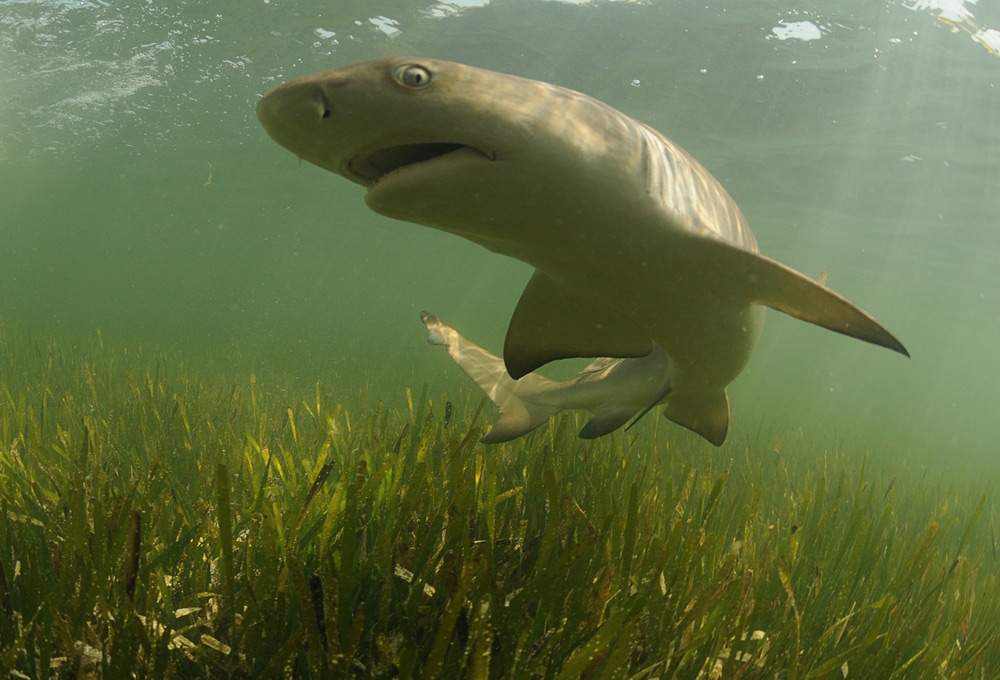
Lemon sharks spend most of their time in coastal waters. They tend to prefer shallow water with a depth of no more than 295.3 ft (90 m).
They also seem to prefer shelter. Lemon sharks seek out mangrove swamps, enclosed bays, and coral reefs.
These sharks are a migratory species and will inhabit deeper water while migrating.
Lemon sharks are highly adaptable. They can live in saltwater, freshwater, and brackish water. They often travel near the mouths of rivers and sounds. Still, they rarely go far into these watery habitats.
Lemon Shark Behavior
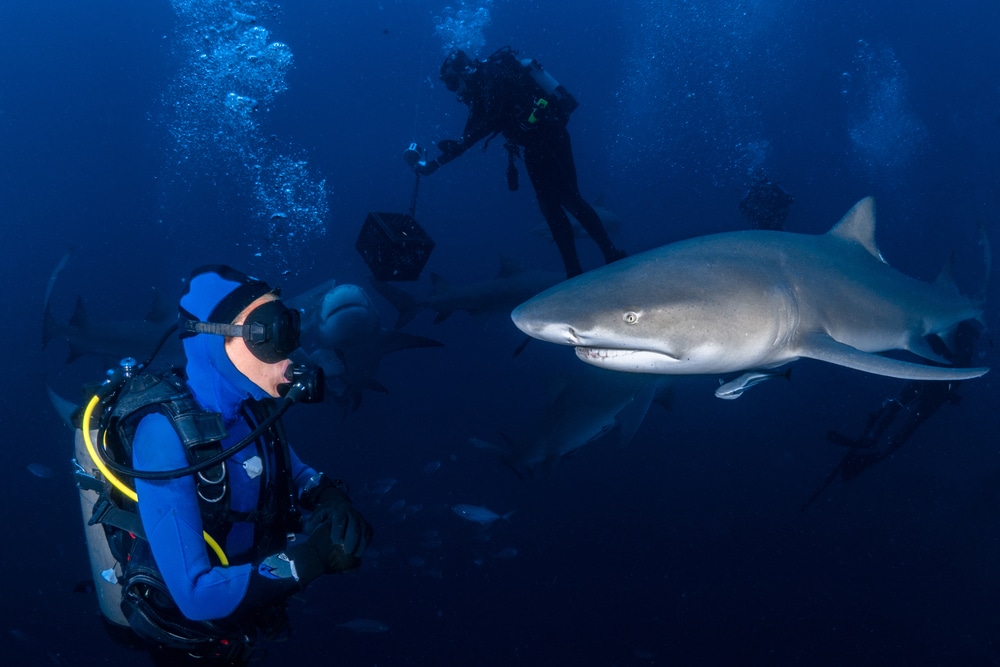
Lemon sharks adjust to changing salinity. They can also withstand low oxygen levels.
Most fish must constantly move to be able to breathe. The water flowing over their gills provides oxygen to their bodies. If they stop moving, they don’t receive oxygen and suffocate.
Lemon sharks can survive a significant amount of time on low oxygen. They often lay unmoving at the bottom of the ocean while they rest.

Lemon Sharks Are Solitary Animals
These sharks are typically loners, although they’ll sometimes travel in groups. Up to 20 lemon sharks have been seen gathering together at once. Usually, groups of lemon sharks gather around fishing docks where there is food.

Lemon Sharks Are Diurnal
Lemon sharks remain active throughout the day. Still, they are most active during sunrise and sunset.

Lemon Sharks Are Travelers
Lemon sharks are a migratory species. Unfortunately, researchers don’t know much about their migration habits yet.
Their typical home range spans several hundred square kilometers.
You may also like: A Deep Dive into the 25 Types of Sharks (Names, Chart and Pictures)
Lemon Shark Communication

All sharks have “Ampullae of Lorenzini.” These are ampullary receptors that allow the sharks to sense electric charges. The receptors are on the sharks’ heads and help them to easily locate prey.
These sharks have excellent eyesight which is crucial for capturing prey.
There are horizontal bands, called “visual streaks,” that run across the sharks’ retinas. The visual streaks contain a great number of cones that allow lemon sharks to see many colors. The cones also allow them to see shapes well.
Their sense of smell is also remarkable. One study showed that lemon sharks could smell a bit of tuna juice in 25 million parts of seawater.
You may also like: The Sea’s Most Infamous Predator: What’s The Biggest Great White Shark Ever Recorded?
Lemon Shark Breeding Habits
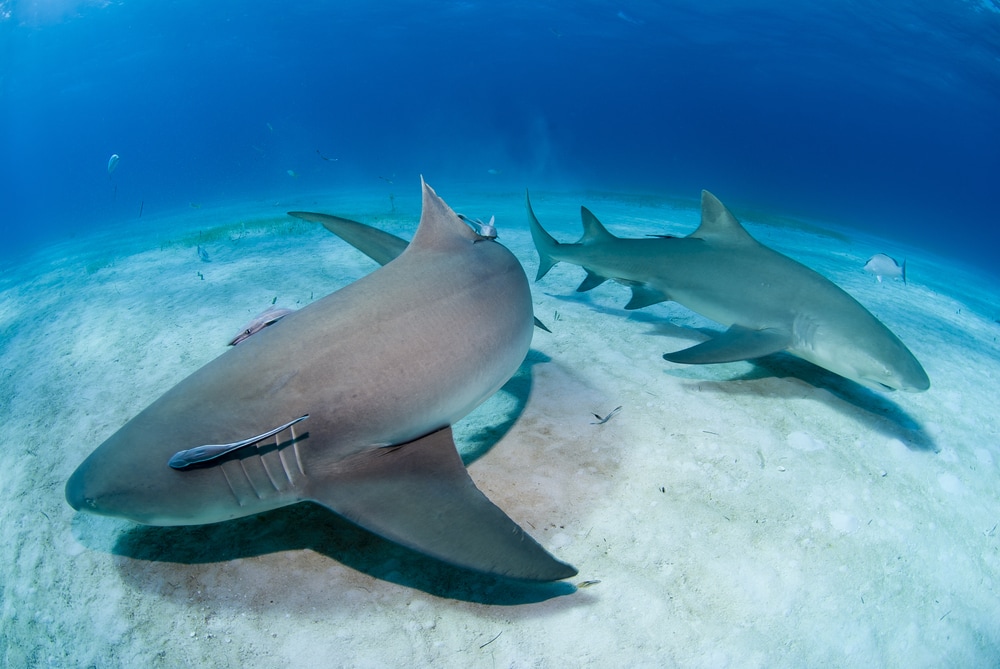
Both male and female sharks reach sexual maturity at around six to seven years of age.
Lemon sharks mate in the spring and summer months. During courting, the male bites the female on the pectoral fin. Females often have “mating wounds” on their bodies from this rough behavior.
Females Can Store Sperm
Males have reproductive organs called “claspers.” They insert the claspers into the female’s cloaca.
After mating, the male leaves and offers no parental care.
Researchers believe that females can store sperm from several mates at once. The advantage of storing several males’ sperm allows for better competition.
If one male has weak genetics, only a few pups will be affected by them rather than the whole litter.
Studies show that pups from the same litter can have different fathers.
Incubation & Birth
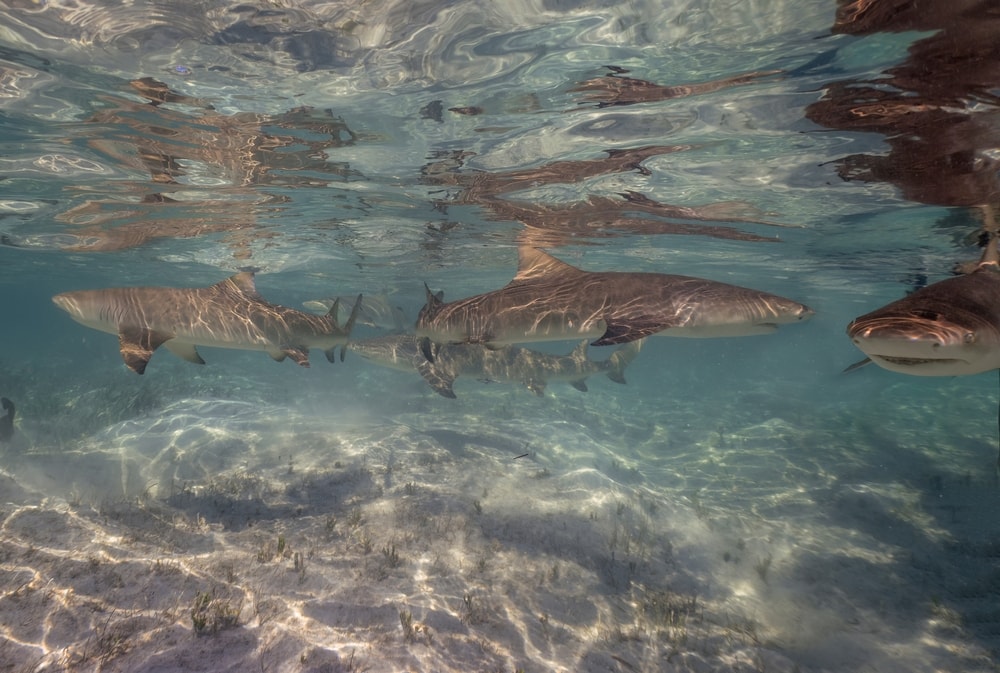
The incubation period of lemon sharks is ten to 12 months.
The mother is viviparous, meaning she gives birth to a litter of live young. Mother lemon sharks produce four to 17 pups in a single litter.
Females give birth to their pups in the same nursery area each time. They have a homing sense that enables them to return to the same nursery every year.
Research shows that female lemon sharks may go a year without mating after giving birth.
The Pups
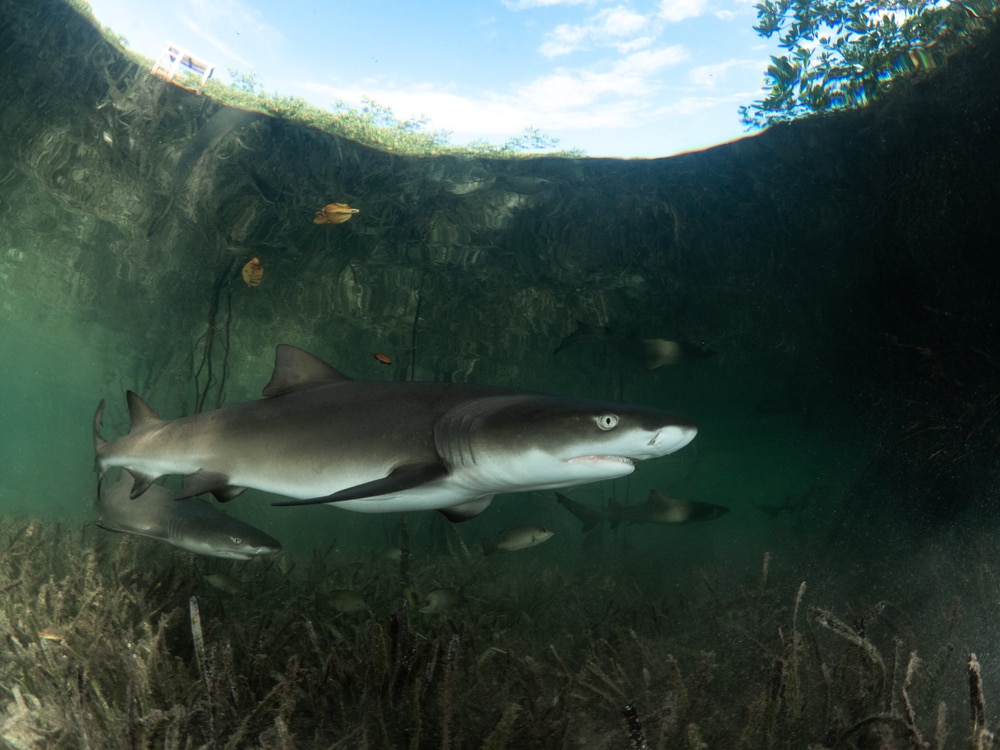
At birth, lemon shark pups are only about 23.6-25.6 in (60-65 cm) long.
Pups remain in the nursery area where the waters are shallow for about two to three years. They only travel a few square kilometers throughout their nursery area. Staying in the nursery area gives the pups easy access to prey. It also protects them against predators.
Juvenile lemon sharks begin to leave the nursery area once they’ve reached about 35.4 in (90 cm) in length.
They seem to remain near the nursery area for several years after this. Still, they gradually begin moving to deeper waters.
Lemon sharks continue growing throughout their lifetime; about 0.21 in (0.54 cm) a year.
Lemon Shark Life Cycle
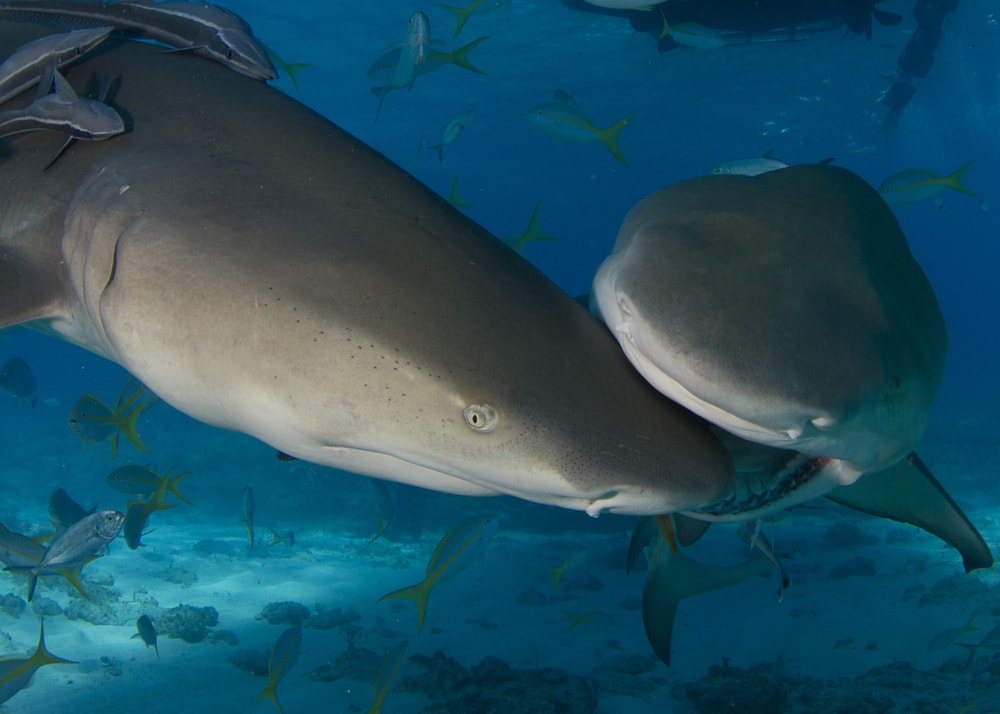
These sharks typically live for over 30 years in the wild.
Researchers aren’t sure of the exact ages of sharks in the wild. They use their size and growth rate to estimate their ages.
Scientists have caught many wild lemon sharks they believe to be over 30 years old.
The oldest lemon shark living in captivity was only 25 years old when it died.
You may also like: Ancient Predators: How Long Do Sharks Live?
Lemon Shark Diet
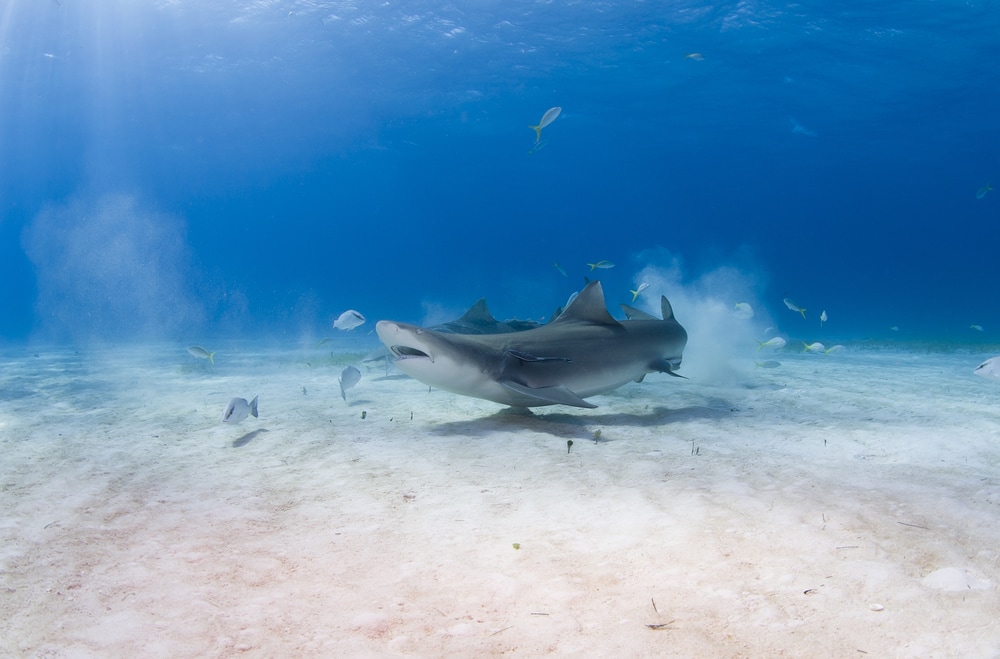
Lemon sharks are carnivorous with a diet comprising fish, mollusks, and crustaceans.
Their meals primarily consist of these animals:
- Atlantic guitarfish
- Brown crabs
- Cowfish
- Flathead mullets
- Red swamp crayfish
- Southern stingrays
- Spot-fin porcupinefish
- Spotted eagle rays
It’s rare, but they sometimes eat sea birds and small sharks, as well.
Juveniles have more restricted diets because of their small jaws. They mostly eat shore crabs and giant tiger prawns.
They often swim along the sandy bottoms of their habitat searching for food. They continue eating until they are no longer hungry. How quickly they digest their food depends on how much they eat at a time.
A Shark’s Complex Digestive System
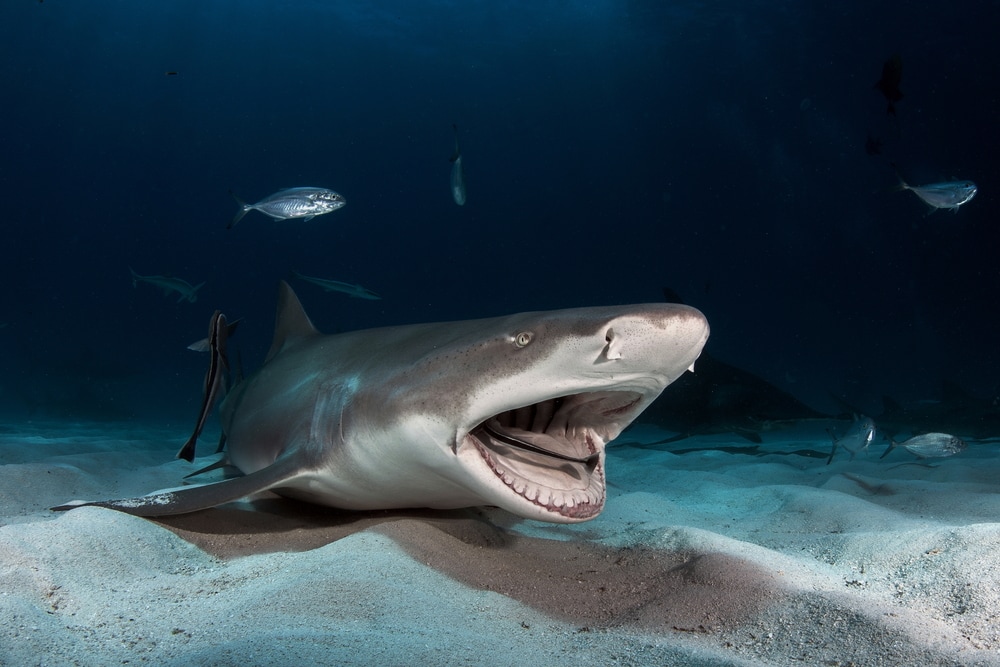
Sharks have complex digestive systems because they are designed for the most efficiency. Their stomachs are in the shape of a “J,” and they can expand to hold a large amount of food. Sharks usually swallow their food whole or eat it in large chunks. It’s necessary for their stomachs to hold a lot.
Their stomach acid is so strong that it can dissolve metal, though it can’t dissolve bone.
The bones are too large to make it into the intestines as the opening is too small. Instead, the shark regurgitates the bones back out of the mouth.
Some species can even push their stomachs out of their mouths so that it’s inside out. Doing this makes it easier to get rid of bones and other indigestible materials.
After getting rid of the bones, they wash their stomachs with ocean water and pull it back into their bodies.
Their intestines are short. Yet, they have internal valves that increase the surface area. The internal valves are flexible and can form many shapes to allow for easy passage.
By having more surface area, the food moves more slowly through the digestive system. By slowing down the food, digestion speeds up. The nutrients from the food are absorbed into the blood.
You may also like: How Do Sharks Mate? It Might Surprise You
Lemon Shark Predators
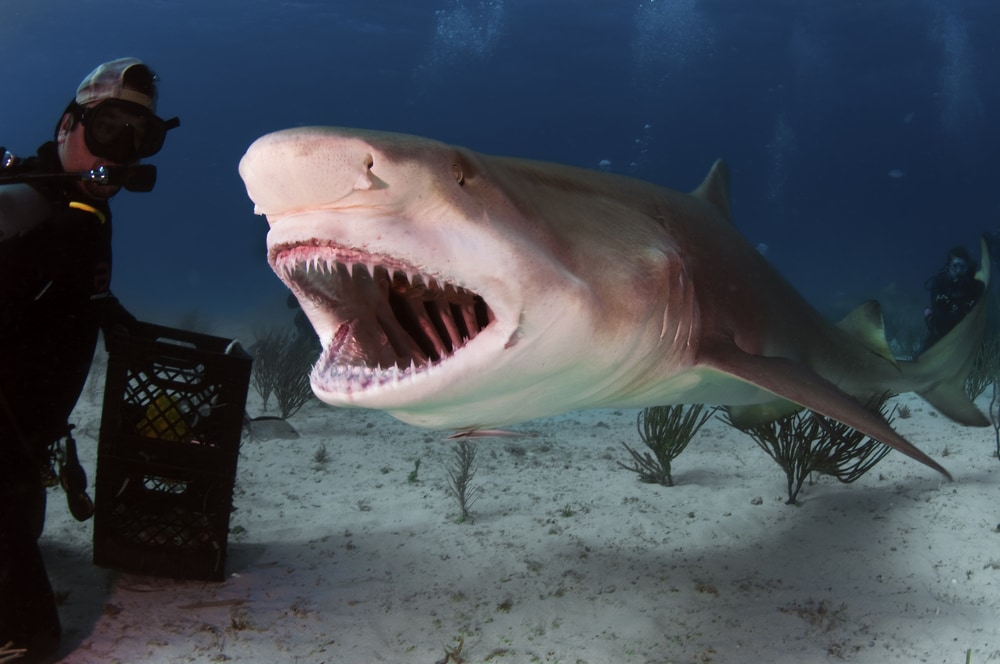
Adult lemon sharks will sometimes cannibalize juveniles. There are no known predators of adults.
Lemon sharks are often victims of internal and external parasites.
Fortunately, remoras, or sharksuckers, often attach themselves to the skins of sharks. They help the sharks by eating some of the parasites living on the outside of their bodies.
The sharksuckers are drawn to the sharks because they feed on their leftover scraps of food.
You may also like: Goblin Sharks: Secrets Of The Depths’ Most Bizarre Predators
Lemon Shark Conservation
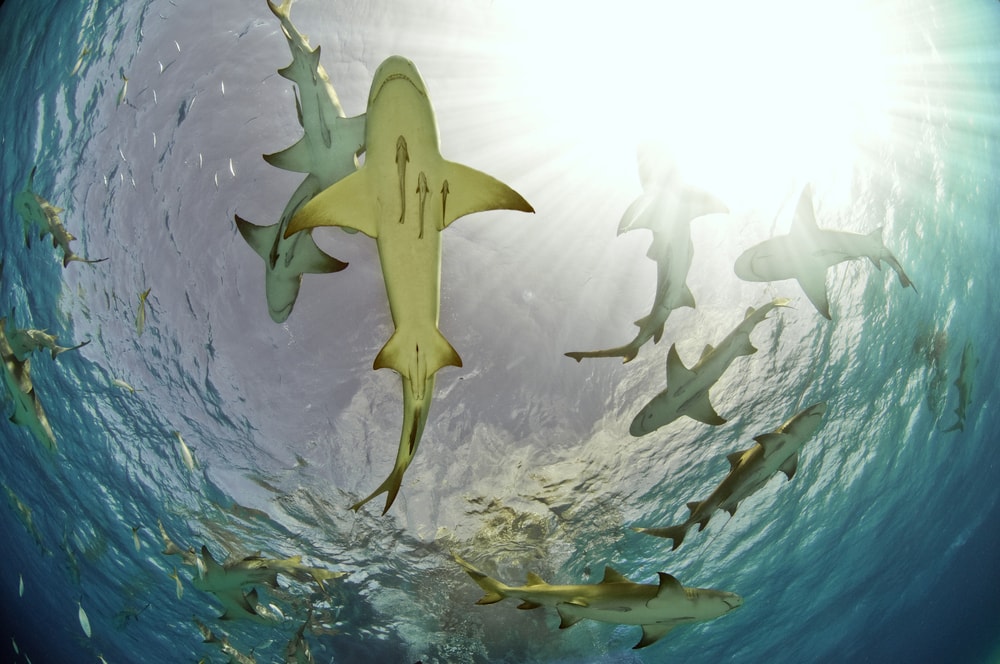
The International Union for the Conservation of Nature (IUCN) assessed lemon sharks in 2020. The IUCN lists them as “vulnerable” with a “decreasing population” trend.
Experts aren’t sure about the population size of this species.
Despite their “vulnerable” status, there are no management plans to protect lemon sharks.

Shark-Fin Soup
One of the biggest threats to lemon sharks is the use of their meat, particularly in Asian countries. Their fins are used for shark fin soup. Unfortunately, the method for collecting shark fins is cruel. It also has devastating effects on their populations.
Humans also use the sharks’ liver oil for medicinal purposes and its skin for leather.

Fishing
Lemon sharks are often victims of bycatch from commercial gillnet and longline fisheries. Fishing is unmanaged across most of the sharks’ range.
Lemon sharks take a long time to reach sexual maturity, and they only reproduce once a year. Their low reproductive rates leave them particularly vulnerable to overfishing.

Habitat Degradation
Mangroves are increasingly turning into shrimp farms across the lemon shark’s range.
Many lemon sharks use mangroves for their nursery areas. The loss of these habitats is putting pups in danger.

Climate Change
The warming of the oceans is causing coral bleaching. Coral reefs make up a large part of the lemon shark’s habitat. The sharks are losing part of their range with the death of the corals.
Coral reefs also act as nursery areas for many lemon sharks. Besides losing their homes, they are also losing areas for their young to grow up.

Are Lemon Sharks A Danger To Humans?
Lemon sharks pose little danger to humans. There are only 10 “unprovoked” attacks on record, and none were fatal.
You may also like: Are Sharks Mammals: Where Do Sharks Fit in the Classification of Animals?
Lemon Shark FAQs
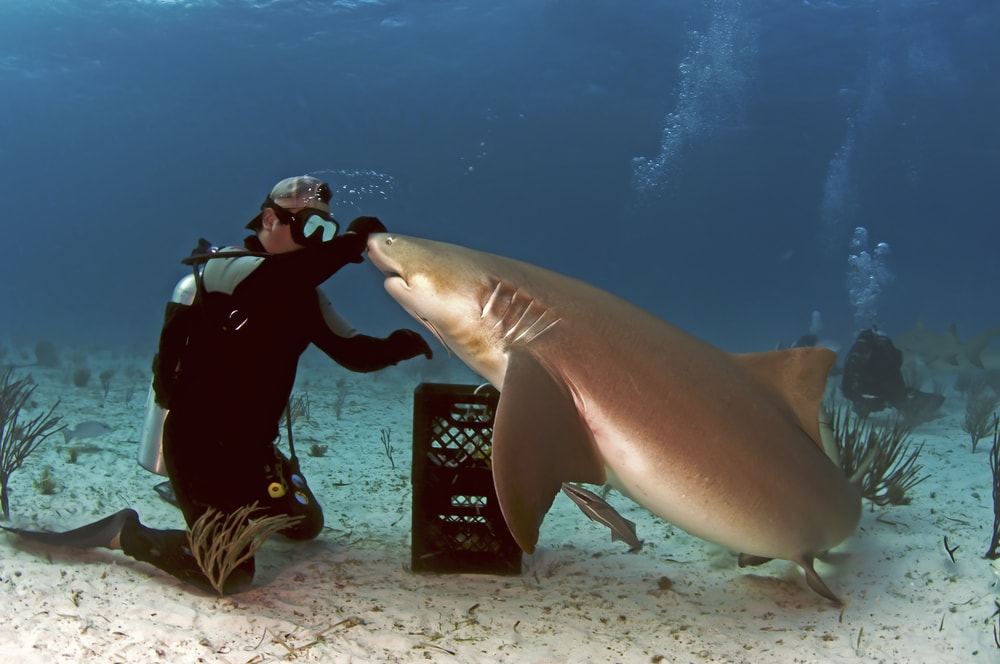
Can You Touch A Lemon Shark?
Lemon sharks are rarely aggressive toward humans, but that doesn’t mean you should touch them.
A viral video from 2016 shows a diver petting a lemon shark; something that he says he does regularly.
The diver says that he records these interactions to show that sharks aren’t as scary as movies make them out to be. But, this behavior encourages people to do something dangerous.
George Burgess works for the Florida Museum of Natural History. He says that sharks behave this way because they’ve been trained to associate it with food. They don’t behave this way because they crave touch.
Other videos show the diver feeding sharks, which is illegal.
Burgess says the shark wouldn’t approach the diver this way if he didn’t have a history of feeding it.
Why Are Lemon Sharks So Friendly?
Lemon sharks are not fearful of humans.
Some people have noticed that lemon sharks will sometimes swim around docks. This behavior doesn’t mean they are friendly, though.
Lemon sharks often hang out around docks because they know it’s an easy place to find food. These sharks are one of the more docile species, and they rarely attack humans. Still, they are wild animals — predators — with incredibly sharp teeth and a high prey drive. People should never assume sharks are friendly or try to approach them.









